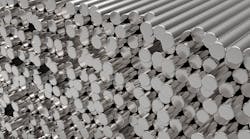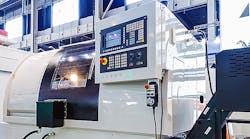We probably don’t need to tell you why aluminum is one of the most common raw materials in the world. What you might not know is that, until modern technologies made it easier to work with, aluminum carried one of the heftiest price tags of all known metals.
Today, you can find it everywhere. Nearly every industry — from food service and medicine and from consumer electronics to military-grade aircraft — uses aluminum products extensively. However, as we’ve tamed this priceless element and learned to add other alloys to create desirable characteristics, it’s become harder to keep track of all the variations available to machinists.
Let’s take a closer look at some of the most useful aluminum grades — and how to choose among them?
Pure Aluminum
Before getting into some of the more specialized aluminum grades, pure aluminum is definitely worth a look, depending on your project and intended outcome. When it comes to electrical conductivity, pure aluminum is a great choice — it’s surpassed only by copper and silver in that respect. If you’re manufacturing cables and wires, consider pure aluminum.
Compared with copper and iron, aluminum also has a relatively low density, meaning it has an attractive strength-to-weight ratio. It makes a great lightweight and durable housing for a variety of products, including consumer electronics and, of course, packaging materials for beverages and other industries.
Note, however, that aluminum — and most aluminum alloys — perform poorly when exposed to high alkali and salt content, such as near saltwater. Take this into consideration as you choose your materials, because no matter how strong aluminum is initially, deploying it in an incompatible or unfriendly climate could mean your efforts — and your finished products — go to waste.
Going beyond pure aluminum, and recognizing that the term “aluminum alloy” is actually a broad family of alloys, each with discrete advantages and disadvantages, let’s take a look at the rest of your aluminum choices.
Anti-Rust Aluminum — Anti-rust aluminum is just what its name suggests. Although aluminum in general has a low tolerance for salt and alkali, anti-rust aluminum does offer peace of mind as a critical material in welding together structural members for buildings, ducts, fuel tanks and more.
Cast Aluminum Alloy — Cast aluminum alloys are distinctly easy to work with in most die casting and machining processes. They offer a pleasing compromise between low density and high strength, making them some of the most common aluminum alloys out there.
This type of alloy is suited for a variety of parts with complex shapes and high expectations for performance. Potential product applications include sensitive instrument enclosures, crankcase and piston parts, and components in liquid-cooled engine apparatuses.
Hard Aluminum — Hard aluminum, meanwhile, is a common material in the aerospace and related industries. Its superior mechanical strength over other aluminum alloys makes it a better choice for structural components. It maintains aluminum’s weakness to corrosion and high-alkali atmospheric conditions, however.
Super-Hard Aluminum — Finally, super-hard aluminum takes things even further by adding the element zinc to the mix. You won’t find a stronger material in the aluminum family than super-hard aluminum.
Understanding the Numbered Grades
Manufacturers and consumers alike tend to get a little bit confused about some of the numbered grades assigned to aluminum alloys. Some of the most popular smartphones these days use alloys in the 7075 range, for example. It’s not too complicated to get the hang of it, however. You’ll see a variety of numbered designations, but here’s a brief crash course:
• 1XXX-Series Aluminum: This is pure aluminum — or at least 99-percent pure aluminum. It’s common in food service and power transfer infrastructure.
• 2XXX-Series Aluminum: This aluminum alloy contains copper for improved heat resistance. The combination results in a material that is tough, but not terribly weather- or atmospheric-resistant.
• 6XXX-Series Aluminum: This type of aluminum is a go-to in structural engineering for buildings and vehicles. It was the alloy of choice for Apple until the iPhone 6’s so-called bendgate incident, at which point the designers switched to the 7XXX line for the iPhone 6s and later.
Aluminum vs. Other Metals
We touched briefly on some of the ways aluminum outperforms — or does not — some of the other metals you might be considering for your project. Here are some others:
Steel and stainless steel are, of course, some of the strongest metals available today. Steel offers superior corrosion resistance over aluminum.
Titanium is extremely strong but also very lightweight, with a pleasing density-to-performance ratio. Some heat-treated steels outperform titanium, but it’s still an excellent choice for a wide variety of industrial and even military applications. Naturally, it’s more expensive to work with than aluminum — but if the durability of your product is the most important factor, remember that titanium maintains the highest density-to-strength ratio of any currently known metallic element.
Magnesium alloy is the lightest metallic alloy available. Magnesium alloy is very popular in die casting because it offers better elasticity and corrosion-resistance than other alloys. In applications where the weight of a product could influence its performance — as in aerospace and automobile manufacturing — substituting an aluminum alloy with a magnesium alloy has the potential to shave off weight without compromising on strength.
As you can see, aluminum is an exceptionally useful and adaptable material, and now you have a better idea of which alloy is right for your next game-changing product.
Megan Nichols is an amateur astronomer and environmentalist, and a writer on a wide range of scientific topics. Recently she inquired, Is On-Demand Manufacturing the Next Industrial Trend?, and she has offered insights on managing workers and robots, improving machine shop efficiency, Smart manufacturing, and other emerging issues in manufacturing technology. Follow Megan on Twitter @nicholsrmegan.










